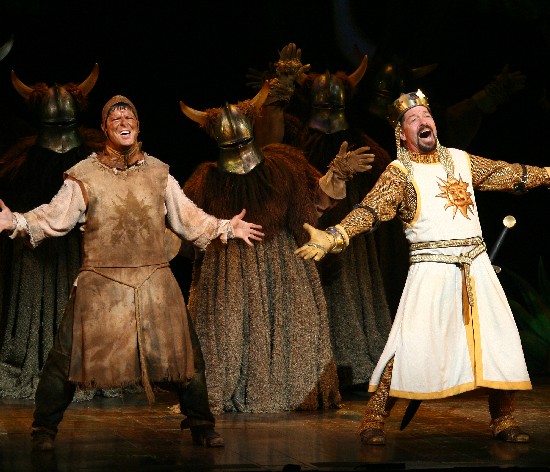Allegro
An Encouraging Sign
Views from the Board
Volume CVII, No. 6June, 2007
As a string player working on Broadway, I have been concerned for many years about the plight of the diminishing orchestra – in particular, string sections. After the 2003 Broadway contract negotiation, my fears intensified. I anticipated that strings would be most affected by reduced minimums, improved electronic simulation, indiscriminating producers and the all-important bottom line.
In some ways, my fears have become a reality.
Over the last few years, we have watched string sections be reduced to quartets – then to solo instrumentalists – and in some cases, wiped out completely by the “musical concepts” of big-budget musicals that fail to meet even the negotiated reduced minimums.
Recently, I was surprised and encouraged by an incident where the value of a full live orchestra – including a string section – has triumphed.
This spring a new company of “Spamalot” was preparing to open for an extended run in Las Vegas at the Wynn Hotel.
While the Broadway orchestra of “Spamalot” is comprised of 17 musicians plus a conductor, the Las Vegas version was to have been reduced to eight, including a playing conductor – and recorded tracks.
At the first preview, Steve Wynn, the hotel owner, found the sound of the reduced orchestra not to be up to the standards of a Broadway musical and therefore unworthy of appearing at his five-star hotel.
Due to the elimination of some instruments used on Broadway, the reduced orchestra sounded thin – despite the added tracks.
To his credit, Mr. Wynn demanded that the music be reorchestrated to include six additional musicians: three more strings, second trumpet, French horn, a second wind player and a conductor.
While I applaud Mr. Wynn’s integrity and willingness to put quality over profit, it leaves me wondering about the state of Broadway and the slippery slope we seem to be headed down.
Mr. Wynn, it seems, inherently understood that it is not the volume of sound but the depth and richness of the sound, which is a product of the instrumentalists who give the music its variety and character.
In a recent New York Times article about the use of the virtual orchestra machine on Broadway, the author – and some letters to the editor that appeared later – seemed to be of the opinion that since theatrical music is already amplified, there is no difference between that which is mechanically reproduced and that which is created by live – albeit amplified – musicians.
This opinion fails to account for one of the basic fundamentals of the creative process: collaboration.
True, sound can be electronically reproduced – but it is merely sound. Notes are only black dots on a lined page. Without the human contribution, music lacks personality and style.
Musicians give life to the musical concept of the composer and convey the necessary emotional content to the audience to enhance the artistic experience.
I fear if the purveyors of the beloved Broadway musical continue to devalue the contribution of live musicians to the aesthetic whole, we will wake up one day and wonder what happened to this wonderful, magical happening that delights and unites audiences nightly.
Maura Giannini is a member of Local 802’s Executive Board.

